
Inside the Robot Kingdom: Japan, Mechatronics and the Coming Robotopia
by
Frederik L. Schodt
Published 31 Mar 1988
In the summer of 1986, Fanuc formed another joint venture, creating GE-Fanuc Automation with the US. firm General Electric to market factory automation equipment other than robots. In keeping with Fanuc's global strategy of international alliances and a division of labor, Fanuc would supply its NC controllers and other hardware while GE would provide engineering know-how, communications software, and computer technology. In the early 1980s, GE had been a contender for world leadership in factory automation and robotics. But six months after signing its agreement with Fanuc, in January 1987, GE announced that it would abandon the robot side of its business.
…
At a huge Ricoh plant in Atsugi, where paper copier machines and other devices are manufactured by people and robots, an introductory video carefully emphasizes that "technology is for human beings, not the reverse," and a brochure illustrates factory automation with a pyramid—of software and hardware on the bottom, and humans on top. Even Dr. Inaba of Fanuc, the Genghis Khan of robots and automation, keeps in mind the limits of technology. In his 1982 biography, he stresses that "factory automation is not to be used to completely un-man the factory. It is a system to reduce labor, and shift people from monotonous to more creative work. It should only be used when this principle is clearly understood."
…
Waldron (Ohio State University); Yutaka Kanayama (Center for Robotic Systems, University of California, Santa Barbara); Bernard Roth (Stanford University). Industry/Labor organizations: Akihisa Terasaki (Federation of Japan Automobile Workers' Unions); Kanji Yonemoto (Japan Industrial Robot Association); Eric Mittelstadt (Robotic Industries Association); Tatsuoki Masui (JAROL); Tadao Tamura, Toyokatsu Sato (International Robotics and Factory Automation Center). Private industry: Gensuke Okada, Naohide Kumagai (Kawasaki Heavy Industries Ltd.); Seiuemon Inaba (Fanuc Ltd.); Takuya Kato (Kato Seiki, Inc.); Kenichi Natsume, Tsugio Nakamoto, Jun-ichi Chiba (Kyodo Printing Co., Ltd.); Nobuyuki Fujita, Noriyuki Tanaka, Hiroji Mizuguchi, Sumio Nagashima, Tetsuo Suzuki, Masana Minami, Yoshinori Kuno, Michael Caine (Toshiba Corporation); Kosei Minami, Tsuyoshi Miura, Toshiya Yamamoto, Hirokazu Shimatake (Nissan Motor Co., Ltd.); Keigo Ushimaru, Iwato Fujii, Tatsuya Nakamine (Seibu Department Stores Ltd.); Toshi Inada, Kenro Motoda (Motoda Electronics Co., Ltd.); Sueo Matsubara (Automax/Mukta Research Institute); Yoshiyuki Nakano, Hideo Maki (Hitachi Works, Hitachi Ltd.); Kisaku Suzuki, Junichiro Nishimura (Suzumo Machinery Industry Co., Ltd.); Hajime Karatsu, Sukeji Ito (Matsushita Electric Industrial Co., Ltd.); Kiyoshi Tawara (Yamasaki Seisakujo); Yoshiaki Maeda, Katsuhiro Kawasaki, Shigeru Tabei, Yuki Gessei (JVC-Victor Company of Japan Ltd.); Brian Carlisle (Adept Technology, Inc.); Joseph Engelberger (Transitions Research Corporation); Victor Sheinman (Automatix); Walter Weisel (Prab Robots, Inc.); Eric Mittelstadt (GMF Robotics, Inc.).

Futureproof: 9 Rules for Humans in the Age of Automation
by
Kevin Roose
Published 9 Mar 2021
Faced with these new, powerful robots, Kawai and his colleagues on the Toyota shop floor had some hard choices to make. Lots of experts and union leaders were predicting a bleak future for autoworkers, and blue-collar factory workers of all kinds. A 1961 article in Time magazine predicted the rise of “The Automation Jobless.” Another article called factory automation “a ghost which frightens every worker in every plant.” But Kawai wasn’t haunted by ghosts, and he didn’t panic, or start looking for jobs in less threatened industries. Instead, according to a profile in the Japan Times, he decided to improve what, in Japanese, is called monozukuri, which translates as “making things,” although its closest English equivalent is probably “craftsmanship.”
…
Rule 4 Leave Handprints Mitsuru Kawai should have been panicking Shusuke Murai, “Hands-on Toyota Exec Passes Down Monozukuri Spirit,” Japan Times, April 15, 2018. A 1961 article in Time magazine “The Automation Jobless,” Time, February 24, 1961. Another article called factory automation Rick Wartzman, “The First Time America Freaked Out over Automation,” Politico, May 30, 2017. Today, Kawai is a living legend at Toyota “Toyota’s ‘Oyaji’ Kawai Calls to Protect Monozukuri,” Toyota News, June 17, 2020. a former steelworker named Frederick Winslow Taylor Frederick Winslow Taylor, The Principles of Scientific Management (New York: Harper & Brothers, 1915).
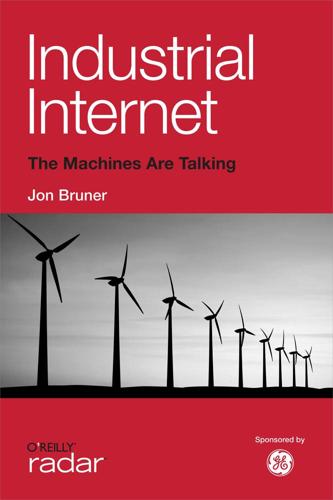
Industrial Internet
by
Jon Bruner
Published 27 Mar 2013
The industrial internet will automate certain repetitive jobs that have so far resisted automation because they require some degree of human judgment and spatial understanding — driving a truck, perhaps, or recognizing a marred paint job on an assembly line. In fast-growing fields like health care, displaced workers might be absorbed into other low- or medium-skill roles, but in others, the economic tradeoffs will be similar to those in factory automation: higher productivity, lower prices for consumers, continued feasibility of manufacturing in high-cost countries like the United States — but also fewer jobs for people without high-demand technical skills. Everything becomes a sensor Any machine that registers state data can become a valuable sensor when it’s connected to a network, regardless of whether it’s built for the express purpose of logging data.

Makers
by
Chris Anderson
Published 1 Oct 2012
Much of the reason for this is that manufacturing, the big employer of the twentieth century (and the path to the middle class for entire generations), is no longer creating net new jobs in the West. Although factory output is still rising in such countries as the United States and Germany, factory jobs as a percentage of the overall workforce are at all-time lows. This is due partly to automation, and partly to global competition driving out smaller factories. Automation is here to stay—it’s the only way large-scale manufacturing can work in rich countries (see chapter 9). But what can change is the role of the smaller companies. Just as startups are the driver of innovation in the technology world, and the underground is the driver of new culture, so, too, can the energy and creativity of entrepreneurs and individual innovators reinvent manufacturing, and create jobs along the way.
…
American workers are also up to three times more productive (not because they’re necessarily more skilled or harder-working, but because they tend to be matched with more automation, which amplifies individual productivity). The Boston Consulting Group estimates that the net cost of manufacturing in China will be the same as that in the United States by 2015.39 And as factory automation becomes more powerful, the labor component of the average product drops. And that means that the traditional labor arbitrage arguments for moving manufacturing jobs overseas will diminish. Right now, in the automotive industry, labor represents less than 15 percent of the cost of the vehicle (the United Auto Workers union claims that it is just 10 percent, but that includes only assembly-line workers, not office, management, and R&D).

Race Against the Machine: How the Digital Revolution Is Accelerating Innovation, Driving Productivity, and Irreversibly Transforming Employment and the Economy
by
Erik Brynjolfsson
Published 23 Jan 2012
High-Skilled vs. Low-Skilled Workers We’ll start with skill-biased technical change, which is perhaps the most carefully studied of the three phenomena. This is technical change that increases the relative demand for high-skill labor while reducing or eliminating the demand for low-skill labor. A lot of factory automation falls into this category, as routine drudgery is turned over to machines while more complex programming, management, and marketing decisions remain the purview of humans. A recent paper by economists Daron Acemoglu and David Autor highlights the growing divergence in earnings between the most-educated and least-educated workers.

Rule of the Robots: How Artificial Intelligence Will Transform Everything
by
Martin Ford
Published 13 Sep 2021
As we’ll see in this chapter, the economy and job market in the United States, as well as in many other developed countries, are now operating in ways that seem to defy many of the rules and assumptions that once appeared to be solidly backed by empirical evidence. In Rise of the Robots, I argued that these changes are being driven largely by accelerating progress in information technology. A long list of key innovations is now behind us—advancing factory automation, the personal computer revolution, the internet, the rise of cloud computing and mobile technology—and the resulting transformation has been playing out over the course of decades. The most important technological impact, however, still lies in the future. The rise of artificial intelligence has the potential to upend both the job market and our overall economic system in ways that are far more dramatic—and foundational—than anything we have seen previously.
…
This transition did result in significant short- and medium-term unemployment as displaced farm workers migrated to cities in search of factory work. Eventually, however, the unemployed workers were absorbed by a rising manufacturing sector, and over the long run, average wages as well as overall prosperity increased dramatically. Later, factories automated or moved offshore, and workers transitioned again, this time to the service sector. Today, nearly eighty percent of the American workforce is employed in service industries. The key question is whether the job market disruption that results from the impact of artificial intelligence will lead to a similar outcome.
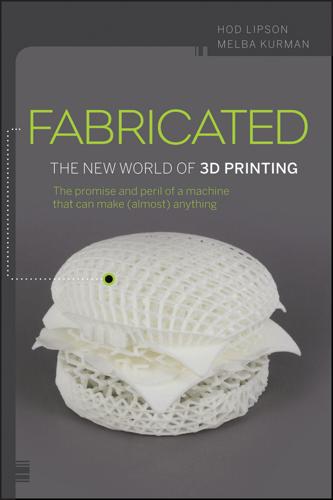
Fabricated: The New World of 3D Printing
by
Hod Lipson
and
Melba Kurman
Published 20 Nov 2012
The crew member’s job is to make sure no one walks on site during construction. The brains of the outfit is a small computer attached to the construction crane that guides the fabrication process. The neighborhood has been watching the FoamHome project with great interest as the home’s walls slowly grow. What was that old joke about the early days of factory automation? “All you need these days to run a factory is a man and a dog. You need the man to feed the dog and the dog to bite the man if he tries to touch anything.” So far, the slowly growing house looks gorgeous, its walls curved in organic patterns and soft curves and hollows. Nobody could build a house like this with frame carpentry, no matter how many people worked on the construction crew.
…
While doing research for this book, we learned that 3D printing is taking root in former manufacturing regions, in the economically decaying rust belt of upstate New York and parts of the Midwest. In these businesses, in many cases, employees are alumni of now defunct local manufacturing plants. When their jobs dried up under the dual assault of outsourced production and factory automation, laid off employees faced a difficult decision: should they move away to where the jobs are, or should they find a way to stay put and somehow make it work? In the past, no small business could have afforded to buy an industrial-scale 3D printer and pay for enough computing power to run industrial design software.

The Second Machine Age: Work, Progress, and Prosperity in a Time of Brilliant Technologies
by
Erik Brynjolfsson
and
Andrew McAfee
Published 20 Jan 2014
Each time the task changes—each time the location of the screw holes move, for example—production must stop until the machinery is reprogrammed. Today’s factories, especially large ones in high-wage countries, are highly automated, but they’re not full of general-purpose robots. They’re full of dedicated, specialized machinery that’s expensive to buy, configure, and reconfigure. Rethinking Factory Automation Rodney Brooks, who co-founded iRobot, noticed something else about modern, highly automated factory floors: people are scarce, but they’re not absent. And a lot of the work they do is repetitive and mindless. On a line that fills up jelly jars, for example, machines squirt a precise amount of jelly into each jar, screw on the top, and stick on the label, but a person places the empty jars on the conveyor belt to start the process.
…
And in the basic model all labor is affected equally by technology, meaning every hour worked produces more value than it used to. A slightly more complex model allows for the possibility that technology may not affect all inputs equally, but rather may be ‘biased’ toward some and against others. In particular, in recent years, technologies like payroll processing software, factory automation, computer-controlled machines, automated inventory control, and word processing have been deployed for routine work, substituting for workers in clerical tasks, on the factory floor, and doing rote information processing. By contrast, technologies like big data and analytics, high-speed communications, and rapid prototyping have augmented the contributions made by more abstract and data-driven reasoning, and in turn have increased the value of people with the right engineering, creative, or design skills.

The Technology Trap: Capital, Labor, and Power in the Age of Automation
by
Carl Benedikt Frey
Published 17 Jun 2019
Office employees think the broad impact of office automation is to eliminate jobs and regard the methods changes as temporarily disruptive, but they often welcome change and rarely reject mechanization as such. Attitudes toward change appear to depend on the ability of the individual to deal effectively with change and on the skill with which the organization manages the change. Studies of factory automation suggest that automated plants are preferred as work places to less advanced plants, although they provide important sources of dissatisfaction. The sources of satisfaction and dissatisfaction vary over the course of adjustment to automation.43 To be sure, none of these studies surveyed displaced workers, and it stands to reason that those who found their jobs taken over by machines had less favorable attitudes toward automation.
…
Machine operations had become even more subdivided. Workers’ jobs were turned into mechanical motions, in which conveyors brought the task to the worker. Such specialization greatly increased productivity in American factories but brought greater monotony for the worker. From this point of view, factory automation can be regarded as a blessing because it meant that industrial robots, controlled by computers, could eliminate the need for direct human intervention in operating machines. Instead of having workers specializing in machine tending, many routine tasks could suddenly be performed by robots with a higher degree of accuracy.
…
It is not perfect, but because the system can learn on its own, it is improving at a far faster rate than machines of the past.42 Thus, while robots are still far from having human-level capabilities when it comes to perception and manipulation tasks, they are becoming sufficiently sophisticated to handle gripping tasks in a structured warehouse setting, like picking items and parcels off a pallet and placing them into cartons or boxes. Just as robots entered the factories, they are gradually making an appearance outside manufacturing. Warehouse automation today is probably where factory automation was in the 1980s. It is true that many of the AI technologies discussed above are still imperfect prototypes. But it is important to remember that just about every technology was imperfect in its early days. To most observers, for example, the first telephones seemed ridiculous. Getting used to hearing a disembodied voice through an earpiece was an experience entirely different from any previous form of communication.

Rise of the Robots: Technology and the Threat of a Jobless Future
by
Martin Ford
Published 4 May 2015
That results in an astonishing ability to rapidly ramp up production or adjust to product design changes, but it also puts extreme pressure on workers—as evidenced by the near epidemic of suicides that occurred at Foxconn facilities in 2010. Robots, of course, have the ability to work continuously, and as they become more flexible and easier to train for new tasks, they will become an increasingly attractive alternative to human workers, even when wages are low. The trend toward increased factory automation in developing countries is by no means limited to China. Clothing and shoe production, for example, continues to be one of the most labor-intensive sectors of manufacturing, and factories have been transitioning from China to even lower-wage countries like Vietnam and Indonesia. In June 2013, athletic-shoe manufacturer Nike announced that rising wages in Indonesia had negatively impacted its quarterly financial numbers.
…
The technology will be used where it is most cost-effective: for example, in creating those parts that need to be customized, or perhaps in printing complex components that would otherwise require extensive assembly. Where 3D printing can’t be used to directly fabricate high-volume parts, it will often find a role in rapidly creating the molds and tools required in traditional manufacturing techniques. In other words, 3D printing is likely to end up being another form of factory automation. Manufacturing robots and industrial printers will work in unison—and increasingly without the involvement of workers. Three-dimensional printers can be used with virtually any type of material, and the technology is finding many important uses outside of manufacturing. Perhaps the most exotic application is in printing human organs.

Age of Context: Mobile, Sensors, Data and the Future of Privacy
by
Robert Scoble
and
Shel Israel
Published 4 Sep 2013
Sensors go back a very long way. In the mid-1600s Evangelista Torricelli, an Italian physicist, invented a way to measure atmospheric pressure by using mercury in a vacuum tube called a Torricellian Tube. Most people know it as a barometer. Sensors’ full capability began about 50 years ago when factory automation started to come into play. Unlike people, sensors work tirelessly, never needing sleep and never demanding a raise. They notice changes where humans miss them, thus ensuring labels are correctly affixed to bottles moving through a factory assembly line. They are used in nuclear power plants for early detection of leaks.

The Lights in the Tunnel
by
Martin Ford
Published 28 May 2011
It is important to note that such a change in the relationship between workers and machines will have a worldwide impact. Advanced machine automation will come to low wage countries as well as developed nations. A 2003 article in AutomationWorld pointed out that “productivity gains spawned by factory automation are driving a worldwide decline in manufacturing jobs, even in developing nations.”33 According to the article, even back in 2003, automation was causing significant job loss in Brazil, India and China. We cannot succumb to the temptation to assume that the rising middle classes in China and India are going to solve the demand problem.
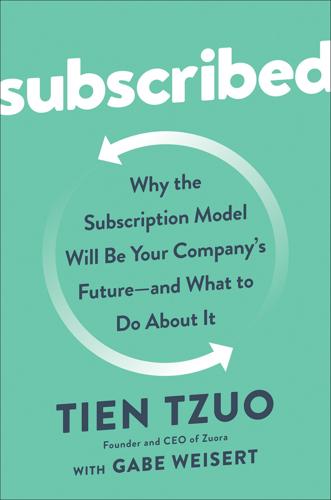
Subscribed: Why the Subscription Model Will Be Your Company's Future - and What to Do About It
by
Tien Tzuo
and
Gabe Weisert
Published 4 Jun 2018
As industrial systems thinker Olivier Scalabre pointed out in a great 2016 TED talk, every sustained period of global economic growth over the last 150 years has been instigated by a manufacturing innovation—the steam train in the nineteenth century, the era of mass production at the start of the twentieth century, and the first wave of factory automation that began in the 1970s. But today we are emerging from a long period of stagnation. As Scalabre notes: It’s not as if we’ve done nothing since the last manufacturing revolution. Actually we’ve made some pretty lame attempts to try to revitalize it. For example, we’ve tried to relocate our factories offshore in order to reduce cost and take advantage of cheap labor.
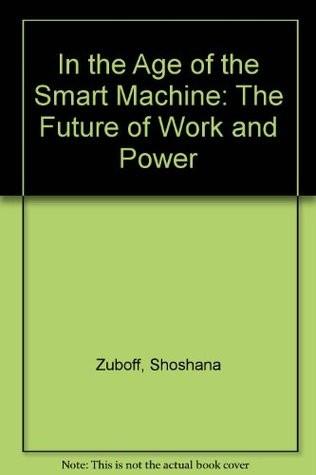
In the Age of the Smart Machine
by
Shoshana Zuboff
Published 14 Apr 1988
There is ample evidence to suggest that these plants are highly repre- sentative among manufacturing organizations in the manner in which they have chosen to interpret new information technology. One Hon- eywell Corporation survey, which probed human resource planning in- stituted by major corporations in conjunction with factory automation, found that only one company out of fifteen had a recognized method for assessing the human resource impact of factory automation. Not a single firm had a process for actually addressing impacts, from educa- tional needs to work force reduction issues. 5 Another survey of plant managers conducted by Honeywell Corporation among its major cus- tomers for integrated information and control technology found that, almost without exception, the "technology ideal" reported by plant managers was having one screen in their office from which they could operate the entire plant. 6 Ramchandran Jaikumar studied installations of flexible manufacturing systems and concluded that u.s. managers tend to use these systems in ways that rigidify the production process and increase central control, thus missing the real opportunities for adaptibility and customization such systems can provide. 7 In a detailed study of the history of numerical control machine tools, David Noble documents the series of technological choices that fa- vored forms of automation which concentrated knowledge and control in the managerial omain.
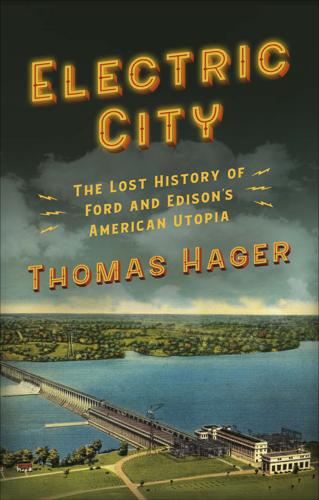
Electric City
by
Thomas Hager
Published 18 May 2021
I don’t attend to his business.” HEFLIN: “You know that Mr. Ford wants to get Muscle Shoals?” EDISON: “Yes. He seems to want it. I don’t know why. He has got enough work now. I think he would be very foolish. His wife thinks so, too.” The elderly inventor’s testimony then wandered off into musings about factory automation, electric automobiles, and tips on how Congress might better make legislation. After forty-five minutes, the panel let him go. What had happened? It is possible that the inventor was tired of his old friend using the Edison name to gain favor for his bid. People kept asking him about fertilizers, and he knew next to nothing about them.

Thinking in Pictures: And Other Reports From My Life With Autism
by
Temple Grandin
Published 10 Jan 2006
Children who are visual thinkers will often be good at drawing, other arts, and building things with building toys such as Legos. Many children who are visual thinkers like maps, flags, and photographs. Visual thinkers are well suited to jobs in drafting, graphic design, training animals, auto mechanics, jewelry making, construction, and factory automation. 2. Music and math thinkers think in patterns. These people often excel at math, chess, and computer programming. Some of these individuals have explained to me that they see patterns and relationships between patterns and numbers instead of photographic images. As children they may play music by ear and be interested in music.

The Impulse Society: America in the Age of Instant Gratification
by
Paul Roberts
Published 1 Sep 2014
Where innovation was once a tool to improve the productivity of the entire economy—companies and workers, capital and labor—it’s more exclusive today. Increasingly, innovation improves the productivity of capital, via faster returns, while leaving labor’s productivity largely unchanged, or even slowed. For instance, where early moves toward factory automation were generally associated with increased worker productivity—that is, each factory worker could now produce more output per hour and thus merit a higher wage—the “innovation” of offshoring has often yielded lower worker productivity. Chinese factory workers in the 1990s were substantially less productive than their U.S. counterparts,15 which companies compensated for by piling on more workers.

The Power of Glamour: Longing and the Art of Visual Persuasion
by
Virginia Postrel
Published 5 Nov 2013
“A perfectly ordered mechanical civilization” could replace unpredictable, stressful, and seemingly haphazard developments with something more harmonious and efficient.53 Here was a future with a blueprint. Social and economic planning promised to control the turbulence that made modernity so unnerving—and to do so in a way that was as scientific as factory automation. “One thing we are confident we know about this world we hope to build,” wrote the industrial designer Walter Dorwin Teague, “and that is that it will be free from the confusions, wastes, and frustrations that we can see all around us today. . . . It will have the perfect integration of parts we see today in some of our products that machine production makes possible.”54 Planning offered, wrote the British socialists Sidney and Beatrice Webb, “the only alternative to the anarchy of individual profit-seeking,” with “its devastating alternation of booms and slumps.”55 Centralized coordination would eliminate wasteful competition and duplication.

The Connected Company
by
Dave Gray
and
Thomas Vander Wal
Published 2 Dec 2014
We were sure that American workers would never put up with these paternalistic practices. Then, of course, Toyota started building plants in the United States, and they got the same results here they got in Japan—so our cultural excuse went out the window. For the next five years, we focused on Toyota’s manufacturing processes. We studied their use of factory automation, their supplier relationships, just-in-time systems, everything. But despite all our benchmarking, we could never seem to get the same results in our own factories. It’s only in the last five years that we’ve finally admitted to ourselves that Toyota’s success is based on a wholly different set of principles—about the capabilities of its employees and the responsibilities of its leaders.

Reskilling America: Learning to Labor in the Twenty-First Century
by
Katherine S. Newman
and
Hella Winston
Published 18 Apr 2016
At Piedmont Technical College’s Center for Advanced Manufacturing in Laurens, South Carolina, fifteen young men (no women) are working in small groups, building model conveyor belts using a combination of sensors (inductive and optical) and a software program. Most of them are in a two-year AA program, working toward a degree in mechatronics, which one of them describes as “the study of factory automation.” Some of the students in the class came to Piedmont Technical College (PTC) right out of high school, while others took a less direct route: They held low-wage fast-food jobs or low-skill factory jobs. PTC’s promotional materials emphasize that its graduates will be “career ready” the day they graduate and will earn 30 percent more than high-school graduates (they also note that some graduates start out earning more than $50,000 a year).

What Algorithms Want: Imagination in the Age of Computing
by
Ed Finn
Published 10 Mar 2017
In terms of their power relationship to global algorithmic systems, the lives of American cloud workers are not that different from the well-known miseries of Apple contractor FoxConn’s massive facilities in China.44 There workers, some children as young as fourteen, have persistently suffered under incredibly long hours, dangerous working conditions, and other serious problems.45 Terry Gou, the company’s chairman, put it bluntly in 2012: “[We have] a workforce of over one million worldwide and as human beings are also animals, to manage one million animals gives me a headache.”46 So far, corporations have been unable to escape what William Gibson once called meatspace, the squishy realm of biological materiality. Biopower fuels many crucial aspects of the interface economy, though advances in robotics and artificial intelligence may one day eliminate the jobs most of these “animals” hold. In addition to spending $775 million to acquire the factory automation firm Kiva Systems, Amazon is already testing out robot arms and other automated systems that could eliminate the human job of picker entirely.47 Like the intense logistical requirements of Amazon’s same-day delivery services, FoxConn’s conditions are underwritten by Apple’s relationship with its consumers.

The Singularity Is Near: When Humans Transcend Biology
by
Ray Kurzweil
Published 14 Jul 2005
The latest generation of robots uses flexible Al-based machine-vision systems—from companies such as Cognex Corporation in Natick, Massachusetts—that can respond flexibly to varying conditions. This reduces the need for precise setup for the robot to operate correctly. Brian Carlisle, CEO of Adept Technologies, a Livermore, California, factory-automation company, points out that "even if labor costs were eliminated [as a consideration], a strong case can still be made for automating with robots and other flexible automation. In addition to quality and throughput, users gain by enabling rapid product changeover and evolution that can't be matched with hard tooling."
…
In my current projects teams of just three or four people achieve in a few months objectives that are comparable to what twenty-five years ago required a team of a dozen or more people working for a year or more. Software Complexity. Twenty years ago software programs typically consisted of thousands to tens of thousands of lines. Today, mainstream programs (for example, supply-channel control, factory automation, reservation systems, biochemical simulation) are measured in millions of lines or more. Software for major defense systems such as the Joint Strike Fighter contains tens of millions of lines. Software to control software is itself rapidly increasing in complexity. IBM is pioneering the concept of autonomic computing, in which routine information-technology support functions will be automated.7 These systems will be programmed with models of their own behavior and will be capable, according to IBM, of being "self-configuring, self-healing, self-optimizing, and self-protecting."

Rethinking Capitalism: Economics and Policy for Sustainable and Inclusive Growth
by
Michael Jacobs
and
Mariana Mazzucato
Published 31 Jul 2016
The problem is that, contrary to Marx, the introduction and diffusion of the more automated technology did not undermine the position of the adult-male mule spinners in the production process.17 Well into the twentieth century, adult-male mule spinners, known as ‘minders’, remained the principal workers on the ‘self-acting’ machines, and indeed by the final decades of the nineteenth century had become one of the best-organised and best-financed craft unions in Britain.18 More generally, even in the presence of factory automation, skilled shop-floor workers remained central to British manufacturing into the second half of the twentieth century.19 An understanding of where Marx went wrong is of substantial relevance for understanding the sources of productivity growth in the capitalist economy, not only in his time but also in ours.

Lessons from the Titans: What Companies in the New Economy Can Learn from the Great Industrial Giants to Drive Sustainable Success
by
Scott Davis
,
Carter Copeland
and
Rob Wertheimer
Published 13 Jul 2020
At the time, the press typically referred to GE as “the lumbering giant,” not exactly the reputation that Welch wanted to sustain. Welch was a young (mid-forties) and aggressive leader who saw much bigger potential. His first five years were spent cutting layers of management and pushing decision-making down through the organization. He also invested heavily in factory automation and pushed productivity onto the factory floor, a campaign that culminated in the 1990s with the aggressive adoption of Six Sigma (a system for extreme quality control). (See Figure 1.2.) Figure 1.2: The Jack Welch years (1981–2001). Source: General Electric filings, press reports; Bloomberg Meanwhile he pushed his executives to boost market share and find new areas of growth.
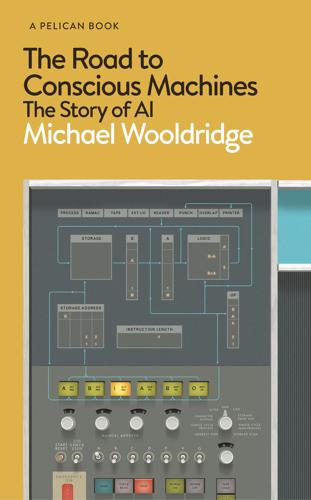
The Road to Conscious Machines
by
Michael Wooldridge
Published 2 Nov 2018
This is a beguiling dream, although again not a new one – utopian AI features prominently in science fiction (although, interestingly, not as frequently as dystopian AI – perhaps it’s harder to write an interesting story about a future in which everyone is happy, healthy and well educated). At this point it is useful to reflect on the impact of microprocessor technology when it was developed in the 1970s and early 1980s. As we discussed above, the advent of microprocessors led to a wave of factory automation, and the public debate at that time, about the implications of microprocessor technology, had very much the same flavour as the present debate about the implications of AI. A confident prediction of that period was that, in the not too distant future, we would spend much less of our time in paid employment – three-day working weeks, or something like them, would become the norm, and leisure time would expand accordingly.
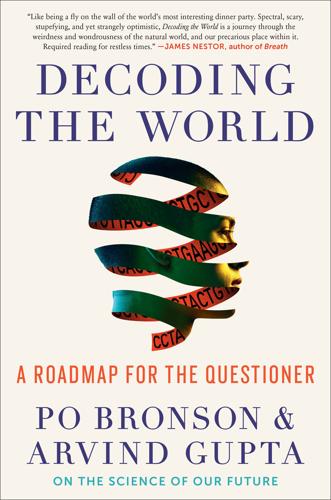
Decoding the World: A Roadmap for the Questioner
by
Po Bronson
Published 14 Jul 2020
When the Industrial Revolution started in Britain 250 years ago with steam-driven yarn spinning, it made the country fabulously wealthy. Due to fear that their technology would get copied, it was illegal to export their machines, and for almost fifty years, Britain had a remarkable head start on everyone else. Today, with far more sophisticated machines, China is now growing fabulously wealthy by perfecting the process. Factory automation will continue to power this wealth creation for some time. But we still can’t help but wonder—what will be the industrial revolution that follows? We’re not going to dematerialize the world, we’re going to rematerialize it. 11 What’s Your Purpose? Finding a Sense of Meaning in Life Is Linked to Health NPR Epidemiology doesn’t get much love these days.

Utopia Is Creepy: And Other Provocations
by
Nicholas Carr
Published 5 Sep 2016
The best way to make flying even safer than it already is, the agency’s research suggests, may be to transfer some responsibility away from computers and back to people. Where humans and machines work in concert, more automation is not always better. That’s a lesson that the Toyota Motor Company, a leader in factory automation, has learned the hard way. In recent years, the carmaker has had to recall millions of vehicles to fix defects, putting a dent in its profits and tarnishing its prized reputation for quality. It now believes that its manufacturing problems stem from a loss of human insight and talent. “We need to become more solid and get back to basics,” a company executive told Bloomberg News, “to sharpen our manual skills and further develop them.”
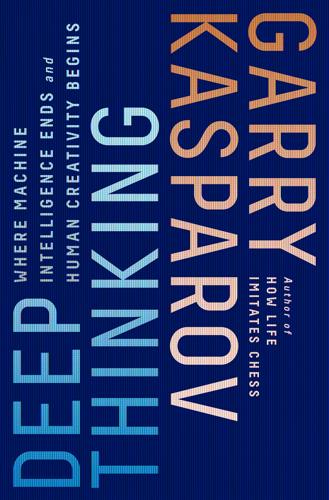
Deep Thinking: Where Machine Intelligence Ends and Human Creativity Begins
by
Garry Kasparov
Published 1 May 2017
This is a critical point to keep in mind before we criticize or praise anyone for their predictions, and before we make our own. Every disruptive new technology, any resulting change in the dynamics of society, will produce a range of positive and negative effects and side effects that shift over time, often suddenly. Consider the most discussed impact of the machine age, employment. The avalanche of factory automation, business machines, and domestic labor-saving devices that, starting in the 1950s, led to the disappearance of millions of jobs and entire professions, while skyrocketing productivity created unprecedented economic growth—and the creation of more jobs than had been lost. Should we pity all the steel-driving John Henrys put out of work by steam engines?
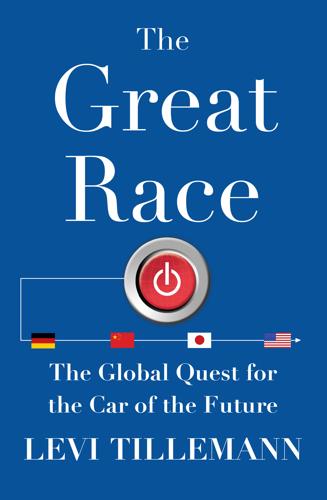
The Great Race: The Global Quest for the Car of the Future
by
Levi Tillemann
Published 20 Jan 2015
Making an automobile that was strong, safe, durable, clean, and efficient enough to be globally competitive required legions of engineers, physicists, specialists in areas like fluid dynamics, harmonics, kinematics, materials science, and an increasingly large number of electrical engineers and computer scientists. A typical car had around 30,000 individual parts, and computing specialists were involved in everything from writing the software for the car’s new onboard computers, to building robots for factory automation, to honing the advanced computer-assisted design (CAD) tools that took the painstaking job of component design out of the physical hands of draftsmen and moved it onto digital screens. About 40 percent of the cost of a luxury vehicle was for electronics, computers, and software. A billion dollars might be spent on writing code before a single car left the factory floor.1 Building a modern automobile required ever-greater levels of precision.
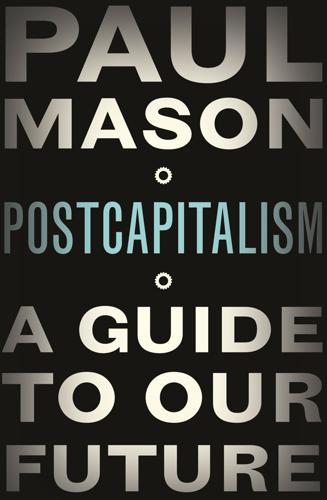
Postcapitalism: A Guide to Our Future
by
Paul Mason
Published 29 Jul 2015
During the 1880s and 90s, new technologies are developed in response to economic and social crises, coming together at the start of the third cycle. 1890s–1945: In the third cycle heavy industry, electrical engineering, the telephone, scientific management and mass production are the key technologies. The break occurs at the end of the First World War; the 1930s Depression, followed by the destruction of capital during the Second World War terminate the downswing. Late-1940s–2008: In the fourth long cycle transistors, synthetic materials, mass consumer goods, factory automation, nuclear power and automatic calculation create the paradigm – producing the longest economic boom in history. The peak could not be clearer: the oil shock of October 1973, after which a long period of instability takes place, but no major depression. In the late–1990s, overlapping with the end of the previous wave, the basic elements of the fifth long cycle appear.
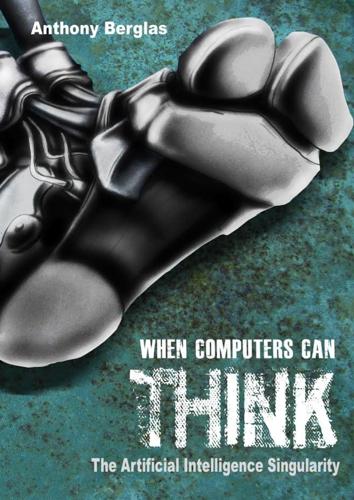
When Computers Can Think: The Artificial Intelligence Singularity
by
Anthony Berglas
,
William Black
,
Samantha Thalind
,
Max Scratchmann
and
Michelle Estes
Published 28 Feb 2015
Small aerial drones and tiny bullet-proof tanks are likely to be a more useful embodiment. Boston Dynamics has recently produced a four-legged robot that can run effectively over rough country. That is a huge amount of work that could be performed by arthropod-brained robots with occasional human supervision. As factory automation improves, the cost of producing these robots will decline. As that cost falls below about $50,000 then uptake of these robots can be expected to be very high. Leisure society Some people have suggested that all this automation will produce a society with greatly expanded leisure. If 30% of all work (say) can be automated by arthropod robots, then people should be able to have almost 30% more leisure.

Machines of Loving Grace: The Quest for Common Ground Between Humans and Robots
by
John Markoff
Published 24 Aug 2015
It was a system that required discipline, and Bradski was a bit of a “Wild Duck”—a term that IBM originally used to describe employees who refused to fly in formation—compared to typical engineers in Intel’s regimented semiconductor manufacturing culture. A refugee from the high-flying finance world of “quants” on the East Coast, Bradski arrived at Intel in 1996 and was forced to spend a year doing boring grunt work, like developing an image-processing software library for factory automation applications. After paying his dues, he was moved to the chipmaker’s research laboratory and started researching interesting projects. Bradski had grown up in Palo Alto before leaving to study physics and artificial intelligence at Berkeley and Boston University. He returned because he had been bitten by the Silicon Valley entrepreneurial bug.
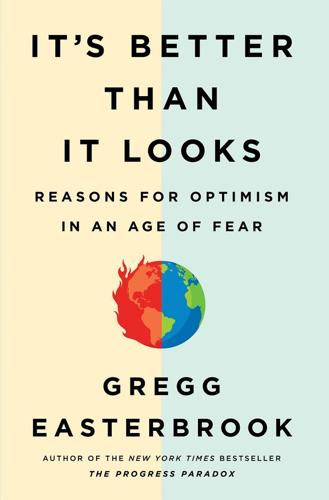
It's Better Than It Looks: Reasons for Optimism in an Age of Fear
by
Gregg Easterbrook
Published 20 Feb 2018
Just because the Luddites were wrong then doesn’t mean they’ll be wrong in the twenty-first century. Already automation has replaced many factory workers. Automation in this sense is not bipedal robots with shiny metallic faces, rather, the contemporary answer to the stocking frame: powered arms that perform repetitive motions, sensors that inspect assemblies, lifts that move weight. Factory automation unquestionably has made factory workers less important, though has also reduced harm to people in manufacturing. The old steel mills and auto plants that commentators and politicians inexplicably sentimentalize were dirty, loud, hot, soul-crushing, and most of all dangerous. The wave of agricultural automation that began a century ago made farm workers less important, and today everyone is better off, while unemployment remains low.
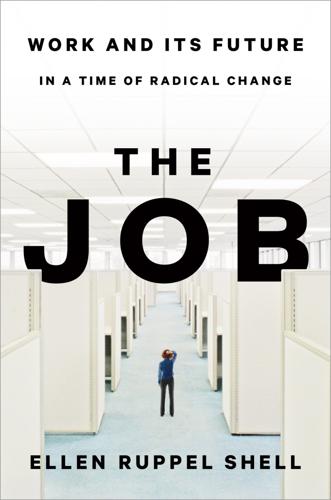
The Job: The Future of Work in the Modern Era
by
Ellen Ruppel Shell
Published 22 Oct 2018
But as we’ve seen in earlier chapters, there is little if any actual evidence of this so-called skills shortage, at least on a national level. Roughly one-third of US factory workers already hold a college degree, and, like the mechanics, engineers, welders, and other Airbus employees in Mobile, many have gained skills in the military or in previous jobs. Given the rapid advances in factory automation, it’s unclear just how many people should be trained up for jobs in mass manufacturing, no matter how “advanced.” In May 2017, Apple CEO Tim Cook announced a $1 billion advanced-manufacturing fund to bolster US manufacturers by offering skills training, such as teaching people to write code to create apps.

The Future Is Asian
by
Parag Khanna
Published 5 Feb 2019
SoftBank and Alibaba’s partnership to capture India’s e-commerce market is a powerful example of the emerging commercial triangle between China, Japan, and India. SoftBank will also invest $25 billion back into Saudi Arabia to stimulate innovation in the Gulf countries. Given its aging demographics, Japan is at the cutting edge of technological approaches to managing elderly populations. It is already a world leader in factory automation; now it is automating daily life. At one of the newest amusement parks outside Nagasaki, the check-in staff in the on-site hotel are robots, as are the chefs and waiters in the resort’s restaurant. Softbank’s Pepper robot is now ubiquitous in shops selling everything from mobile phones to pizza.
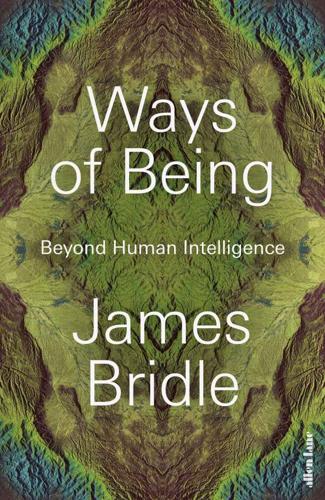
Ways of Being: Beyond Human Intelligence
by
James Bridle
Published 6 Apr 2022
One of most dramatic of these possible futures is described in something called the paperclip hypothesis. It goes like this. Imagine a piece of intelligent software – an AI – designed to optimize the manufacture of paperclips, an apparently simple and harmless business goal. The software might begin with a single factory: automating the production line, negotiating better deals with suppliers, securing more outlets for its wares. As it reaches the limits of a single establishment, it might purchase other firms, or its suppliers, adding mining companies and refineries to its portfolio, to provide its raw materials on better terms.

ZeroMQ
by
Pieter Hintjens
Published 12 Mar 2013
On Up-Front Testing Being able to fully test the real behavior of individual components in the laboratory can make a 10x or 100x difference to the cost of your project. That confirmation bias engineers have to their own work makes up-front testing incredibly profitable, and late-stage testing incredibly expensive. I’ll tell you a short story about a project we worked on in the late 1990s. We provided the software, and other teams the hardware, for a factory automation project. Three or four teams brought their experts on-site, which was a remote factory (funny how the polluting factories are always in a remote border country). One of these teams, a firm specializing in industrial automation, built ticket machines: kiosks, and software to run on them. Nothing unusual: swipe a badge, choose an option, receive a ticket.

The Best Business Writing 2013
by
Dean Starkman
Published 1 Jan 2013
Each robot replaces two to five workers at Earthbound, according to John Dulchinos, an engineer who is the chief executive at Adept Technology, a robot maker based in Pleasanton, Calif., that developed Earthbound’s system. Robot manufacturers in the United States say that in many applications, robots are already more cost-effective than humans. At an automation trade show last year in Chicago, Ron Potter, the director of robotics technology at an Atlanta consulting firm called Factory Automation Systems, offered attendees a spreadsheet to calculate how quickly robots would pay for themselves. In one example, a robotic manufacturing system initially cost $250,000 and replaced two machine operators, each earning $50,000 a year. Over the fifteen-year life of the system, the machines yielded $3.5 million in labor and productivity savings.

Life's Greatest Secret: The Race to Crack the Genetic Code
by
Matthew Cobb
Published 6 Jul 2015
In a postwar world marked by anxieties about the destructive power of technology, Wiener’s vision was simultaneously apocalyptic and humane. He described the ‘unbounded possibilities for good and for evil’ contained in the increased automation of production. This was bold thinking, given that factory automation was in its infancy, and computers were only just able to store a brief program in their valve-based memories. Nevertheless, Wiener foresaw the overall tendency that would characterise production in the second half of the century. He predicted a new industrial revolution that would devalue the ‘simpler and more routine’ aspects of the human brain, as machines began to perform menial mental tasks.

Behemoth: A History of the Factory and the Making of the Modern World
by
Joshua B. Freeman
Published 27 Feb 2018
Ultimately, all the GM plants were unionized, but many companies, like RCA, found that in moving out of established factories to new communities they might end up with unions, but weaker and less militant unions than they were leaving behind.22 Not all new plants were smaller than the ones they replaced or partially supplanted, but most were. Sometimes this reflected a desire to multisource intermediate or final products, building plants for just some of the production previously done at a larger factory. Automation also led to downsizing. Many manufacturers embraced new technologies after World War II that allowed machines to be self-regulating and perform tasks that previously required human labor. Motives included greater precision and speed and the elimination of physically onerous tasks. But a desire to lower labor costs and reduce the power of workers contributed significantly to the automation drive.

Blood in the Machine: The Origins of the Rebellion Against Big Tech
by
Brian Merchant
Published 25 Sep 2023
Instead of the semiautomated power loom, it would be automated customer service software. Instead of the gig mill, it would be the gig app. In the first decades of the nineteenth century, entrepreneurs backed by magistrates and the Crown used a period of depressed trade and poor harvests—when workers were desperate and their leverage was at a low ebb—to push factory automation technologies. In the first decades of the twenty-first century, entrepreneurs backed by the state and venture capital used the period after the 2008 crash—which wiped out jobs and savings around the globe—to push automation and on-demand app technologies. Amazon, Uber, Lyft, DoorDash, InstaCart, TaskRabbit, and other companies drove algorithm-mediated work platforms into the mainstream, normalizing a mode of work that left workers without benefits or protections.

The Quiet Coup: Neoliberalism and the Looting of America
by
Mehrsa Baradaran
Published 7 May 2024
From 1974 to 1980, the membership of the Chamber of Commerce doubled while its budget tripled.31 And after 1971, a number of conservative family foundations began to fund think tanks and academics. Among the donors, in addition to Scaife and Coors, were the Koch brothers (sons of Fred Koch and heirs to an oil empire), John Olin (son of a weapons and mining magnate), and the Bradleys (heirs to Allen-Bradley, a family-owned factory-automation company).32 Ironically, capitalism’s most ardent defenders happened to be the heirs and scions of family fortunes whose experience with capitalism in practice was likely limited. In 1966, based on new legal prohibitions on discrimination, a group of female employees had sued Allen-Bradley for paying them less than male employees.

At the Existentialist Café: Freedom, Being, and Apricot Cocktails With Jean-Paul Sartre, Simone De Beauvoir, Albert Camus, Martin Heidegger, Maurice Merleau-Ponty and Others
by
Sarah Bakewell
Published 1 Mar 2016
He also reflected on historical developments and on the rise of what he called Machenschaft (machination) or Technik (technology): modern ways of behaving towards Being which he contrasted with older traditions. By ‘machination’ he meant the making-machine-like of all things: the attitude that characterises factory automation, environmental exploitation, modern management and war. With this attitude, we brazenly challenge the earth to give up what we want from it, instead of patiently whittling or cajoling things forth as peasant smallholders or craftsmen do. We bully things into yielding up their goods. The most brutal example is in modern mining, where a piece of land is forced to surrender its coal or oil.

Smart Grid Standards
by
Takuro Sato
Published 17 Nov 2015
An Overview of the Smart Grid 1.2.2.5 11 National Electrical Manufactures Association (NEMA) The National Electrical Manufactures Association (NEMA) was founded in 1926 to provide a forum for the standardization of electrical equipment. It consists of more than 400 member companies which manufacture electrical equipment used in power generation, transmission, distribution, factory automation, control, and medical systems. The annual sale of NEMA-scoped products has exceeded $120 billion [19]. NEMA has focused on the development of standards and providing solutions for emerging technical, regulatory, and economic issues. It has published over 600 standards and technical papers in building systems, electronics, industrial automations, insulating materials, lighting systems, medical imaging, power equipment, security imaging, wires, and cables.

Power and Progress: Our Thousand-Year Struggle Over Technology and Prosperity
by
Daron Acemoglu
and
Simon Johnson
Published 15 May 2023
Recent research shows that new innovations appear to benefit more-productive larger firms, whereas the second- and third-tier firms are falling behind across the industrialized world, most likely because their investments in digital technologies are not paying off. More fundamentally, productivity gains from automation may always be somewhat limited, especially compared to the introduction of new products and tasks that transform the production process, such as those in the early Ford factories. Automation is about substituting cheaper machines or algorithms for human labor, and reducing production costs by 10 or even 20 percent in a few tasks will have relatively small consequences for TFP or the efficiency of the production process. In contrast, introducing new technologies, such as electrification, novel designs, or new production tasks, has been at the root of transformative TFP gains throughout much of the twentieth century.
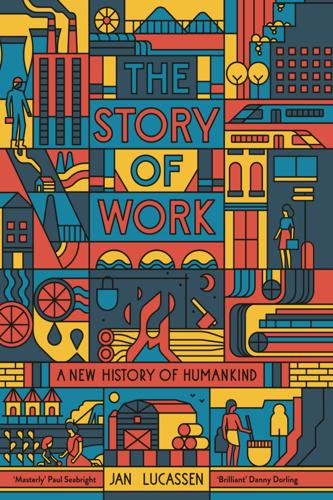
The Story of Work: A New History of Humankind
by
Jan Lucassen
Published 26 Jul 2021
Moreover, we are also seeing the re-emergence of counter-movements, as ‘offshoring’ (moving production to low-wage countries) is once more provoking a turnabout due to robotization in the North Atlantic and due to rising labour costs, especially in China: so-called reshoring. China, in turn, is not sitting still and is now seriously pursuing factory automation. This is not surprising for a country that stands on the cusp of ageing, something that has already begun in Japan and South Korea.3 Fourthly, and certainly not unimportant, for most states, globalization means an erosion of democratic decision making at the national level. Capital is withdrawing itself from the rules of play agreed within nation states.

Artificial Intelligence: A Modern Approach
by
Stuart Russell
and
Peter Norvig
Published 14 Jul 2019
Here too, these robots are initially deployed via teleoperation, and as technology advances they are becoming more and more autonomous, with a human operator in charge but not having to specify every single command. Industry: The majority of robots today are deployed in factories, automating tasks that are difficult, dangerous, or dull for humans. (The majority of factory robots are in automobile factories.) Automating these tasks is a positive in terms of efficiently producing what society needs. At the same time, it also means displacing some human workers from their jobs. This has important policy and economics implications—the need for retraining and education, the need for a fair division of resources, etc.